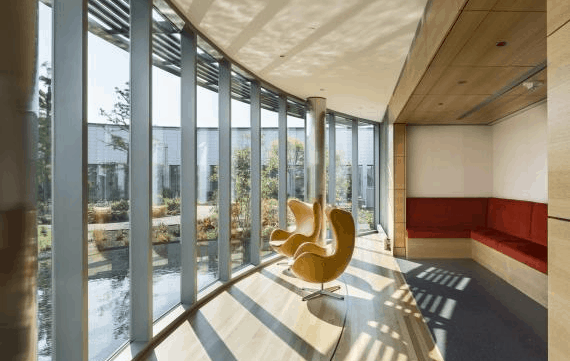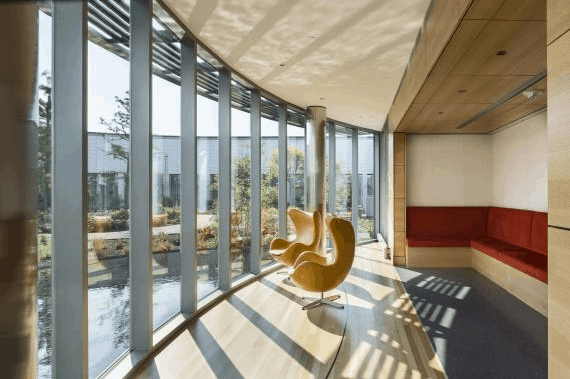Blog
Natural Beauty and Meditation Room Help Ann B. Barshinger Cancer Institute Receive an Honorable Mention Healthcare Design Award

The 2014 Healthcare Design Showcase jury tapped three projects among the 100 submitted to be recognized with an Honorable Mention award. The photo featured above is of the meditation room that helped Ann B. Barshinger Cancer Institute in Lancaster, PA receive honorable mention.
The information provided in this post came from HealthcareDesignMagazine.com. The original posting plus addition information may be seen here.
Honorable Mention for Natural beauty
Ann B. Barshinger Cancer Institute, Lancaster, Pa.; Submitted by Ballinger
Embracing the concept that natural elements can be catalysts for the healing process, the Ann B. Barshinger Cancer Institute in Lancaster, Pa., is anchored by light and landscapes.
The 100,000-square-foot, $36.5 million project opened in July 2013. Its biophilic-inspired design features a concentric, continuous skylight that’s located between a central healing garden and the building’s primary circulation area, providing a visual connection to the garden on the lower level and abundant natural daylighting throughout the facility. Exam rooms and family consult areas are sited on the building’s perimeter, allowing light to filter into diagnostic spaces, too.
The institute’s repeated connections to nature are highlighted by infusion bays on the upper level with balconies overlooking adjacent treetops and a meditation pavilion where patients can gaze out floor-to-ceiling windows to a small reflecting pool.
“Use of the skylight to get daylight to the lower levels is very well done,” said one Showcase juror, while others noted the center to be “a very uplifting space” with a “gorgeous healing garden and lovely architecture.”
Additionally, the project—an expansion to an existing medical mall—sought to provide interdisciplinary care guided by the patient experience. To achieve this, the design team worked closely with end users to develop patient flows through diagnostic, consultation, and treatment areas that inspired the program and its required adjacencies—a process also well received by jurors.








